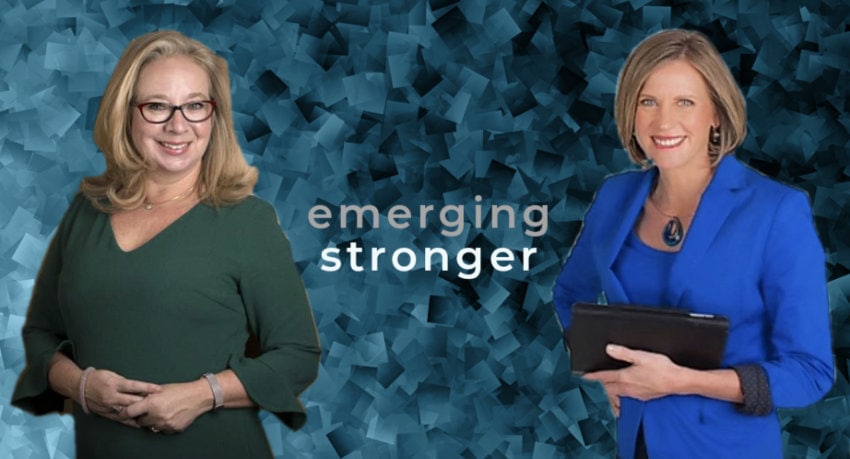Building and Maintaining Your Influence as an L&D Leader: Real-World Lessons
As an L&D leader, your influence is pivotal to your success. While stepping into a new role or organisation can be daunting, it’s a critical time to lay the groundwork for your future impact. Yet, achieving and sustaining this influence is a complex and ongoing task. My own journey at Coca-Cola Amatil underscores this reality.
From 2012, I led the creation of a Technical Academy in Supply Chain. For four years, I built strong relationships with our Supply Chain Director, Bruce, and the senior leadership team. We collaborated closely, aligning our learning initiatives to support strategic business goals. However, when Bruce moved to Japan and a new director, David, took over, along with a new HR manager, everything changed.
David’s arrival coincided with a challenging period for Coca-Cola Amatil. The company was grappling with declining sales amidst societal backlash against sugar. David brought in an external vendor to implement lean manufacturing. I found myself sidelined from project planning. It took several weeks to secure a meeting with Martin, the Manufacturing Manager leading the lean initiative. It was a short meeting. Martin acknowledged the contributions of my team over the past four years but made it clear that the new vendor’s training program would be used and his team could manage it without help from the Academy.
This experience underscores that establishing influence is not a one-time achievement. Things are constantly shifting in an organisation, and you can’t take your eye off the ball. In this post, I’ll share strategies on how to build and sustain your influence as an L&D leader. These insights are drawn from my experience, that of my Learning Uncut podcast guests and tips crowd-sourced in a session I presented at the 2024 Australian Institute of Training and Development (AITD) conference.
Navigating Organisational Politics
Organisational politics can be seen as the unseen currents that shape how decisions are made and how power flows within an organization. As Nigel Paine shared in our discussion on Learning Uncut, organizations are like moving streams. To insert yourself effectively, you must understand the ebbs and flows.
Speak with senior leaders
Every organisation has its unique political landscape—a dynamic flow of power, influence, and decision-making. Understanding and manoeuvring within this landscape is essential for any L&D leader. As Nigel Paine eloquently put it, “Any organsation is like a moving stream…you have to step from the shore into that stream.” This analogy highlights the need to observe, listen, and engage actively on an ongoing basis.
To navigate these waters effectively, schedule brief, impactful meetings with senior leaders. Have a handful of critical questions ready to ask:
- What are your key goals in the coming year?
- What are your burning problems?
- How are knowledge and skills helping or blocking you with these?
These questions not only help you understand immediate needs but also signal your readiness to contribute meaningfully and help you to sense who you might work with most effectively.
Observe and adapt
My experience at Coca-Cola Amatil reinforced that influence is fragile and must be continually nurtured. When David and the new HR manager entered the scene, their priorities shifted, and I had to quickly adapt in an attempt to remain relevant. Stay vigilant and responsive to changes in leadership, organisational context and strategy within your organisation. This agility helps you maintain your influence even as the political landscape shifts.
Understanding Your Organisation
To effectively influence and drive change, you must deeply understand your organisation’s culture, strategy and operations. This understanding forms the bedrock of your credibility and effectiveness as an L&D leader.
Immerse yourself in the organisation
One of the first steps is to engage with people across all levels of the organisation. During her first 90 days, Debbie Key from 40 Winks used mystery shopping to experience her company’s customer service firsthand. Similarly, Dustin Lacasse from the San Diego Zoo immersed himself by working alongside staff in various roles. These hands-on experiences provide invaluable insights into the daily realities and cultural nuances of your organization.
When she started at Deciem, Kristina Tsiriotakis saw herself as a ‘cultural anthropologist.’ Without formal documentation of the company’s strategy or values, she observed and reflected on everyday workforce interactions to understand the company’s culture. She noted behaviours and practices, such as the collaborative and inclusive nature of the creative team, which helped her decode what the company valued and how it operated. Kristina’s method of observing and journaling cultural moments can be incredibly effective in piecing together an organisation’s true essence.
Ask and listen
Engage with employees across different departments to understand their perspectives and challenges. As suggested by participants in the AITD conference session, ask questions like:
- What do you enjoy about working here?
- What are the biggest challenges you face?
- How do your tasks help the organisation to succeed?
This approach not only helps you gather crucial information but also builds rapport and shows that you value their insights.
Read and reflect
In addition to personal interactions, review key organisational documents such as strategic plans, policies, and performance reports. This helps you see the bigger picture and understand how various parts of the organization contribute to overall goals. As one of the AITD tips suggests, keep up to date with internal information to align your L&D initiatives with the organization’s direction.
Building Strong Relationships
Strong, authentic relationships are the foundation of sustained influence. These relationships should span across all levels of the organization, from the executive suite to the front lines.
Show genuine interest
Building relationships starts with showing genuine interest in others. Whether through formal meetings or casual conversations, listening actively and empathetically is crucial. Debbie Key emphasised the importance of empathy in every interaction to help build respect and rapport.
Be present and visible
Make an effort to engage with people in their environments. Shadowing different departments, attending team meetings, and participating in day-to-day activities make you visible and approachable. Nigel Paine pointed out that staying hidden in the L&D department can be detrimental to your influence. Instead, be out there, interacting and making your presence felt.
Be authentic and trustworthy
Authenticity and trustworthiness are key to building lasting relationships. Be yourself and support others to do the same. As noted in the AITD conference tips, uninterrupted one-on-one time and informal gatherings like coffee catch-ups can foster deeper connections and trust.
Additionally, holding yourself accountable for your actions is crucial. When you make commitments, follow through with them. Demonstrating accountability shows that you are reliable and can be trusted to deliver on your promises. This combination of authenticity, trustworthiness, and accountability builds a solid foundation for enduring and effective relationships.
Conclusion
Influence as an L&D leader is built on a foundation of understanding your organisation, navigating its political landscape, and building strong, authentic relationships. It’s an ongoing journey that requires vigilance, adaptability, and genuine engagement. By immersing yourself in the organisation, staying attuned to its dynamics, and fostering meaningful connections, you can establish and sustain your influence, driving impactful change and supporting your organisation’s success.
Learning Uncut helps L&D leaders and their teams increase their impact and effectiveness through evidence-informed practices. We specialize in building and refreshing organizational learning strategies, enhancing L&D operating models, and facilitating L&D team skills development.
Michelle Ockers is the Chief Learning Strategist at Learning Uncut and an award-winning L&D professional. In addition to working alongside clients to lift the impact of L&D in their organisation she offers individual mentoring. Enquire at: https://learninguncut.global/contact/


